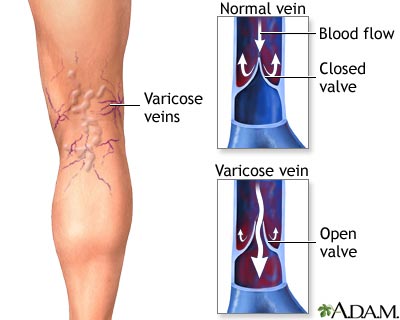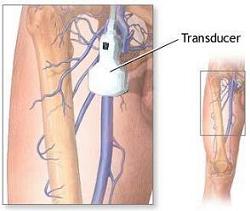
LASER TREATMENT FOR VARICOSE VEIN
What is Varicose Vein?
Varicose veins are veins that have become enlarged and tortuous. The term commonly refers to the veins on the leg, although varicose veins can occur elsewhere. Veins have leaflet valves to prevent blood from flowing backwards (retrograde). Leg muscles pump the veins to return blood to the heart, against the effects of gravity. When veins become varicose, the leaflets of the valves no longer meet properly, and the valves do not work. This allows blood to flow backwards and they enlarge even more. Varicose veins are most common in the superficial veins of the legs, which are subject to high pressure when standing. Besides cosmetic problems, varicose veins are often painful, especially when standing or walking. They often itch, and scratching them can cause ulcers.

Symptoms:
- Fullness, heaviness, aching, and sometimes pain in the legs
- Visible, enlarged veins
- Mild swelling of ankles
- Brown discoloration of the skin at the ankles
- Skin ulcers near the ankle (this is more often seen in severe cases)
Diagnosis:
Doppler ultrasound is a special ultrasound technique that evaluates blood flow through a blood vessel, including the body's major arteries and veins in the abdomen, arms, legs and neck.

Endovenous Laser Treatment:
First the trace of the vein and the position of the saphenofemoral junction is determined by ultrasound. After the percutaneous punction of the vein the physician introduces a thin Caretron litenife optical fiber through a catheter to bring it next to the saphenofemoral junction. A visible red aiming beam indicates the position of the fiber tip. A locally applied tumescent anesthesia prevents an injury of adjacent tissue and has a positive effect on the post-operative pain development. After the ultrasonic position control the laser irradiation starts. The laser radiation causes a well-defined thermal damage of the Intima, which results in a thrombose in the vein and thus closes it. The laser is independent of the diameter of the vein and globally applicable, since a contact of the fiber to the vein wall is not necessary. The controlled damage of the Intima caused indirectly by the heated blood. After only 30 to 45 minutes the treatment is completed.
Advantages of Varicose Vein Treatment with Laser:
- A reduced chance of developing stasis ulcers
- Significant relief from discomfort such as aches, heaviness, and pain
- More efficient blood circulation
- An improved body image and confidence in one’s appearance
- A minimally invasive, quick and easy treatment option
